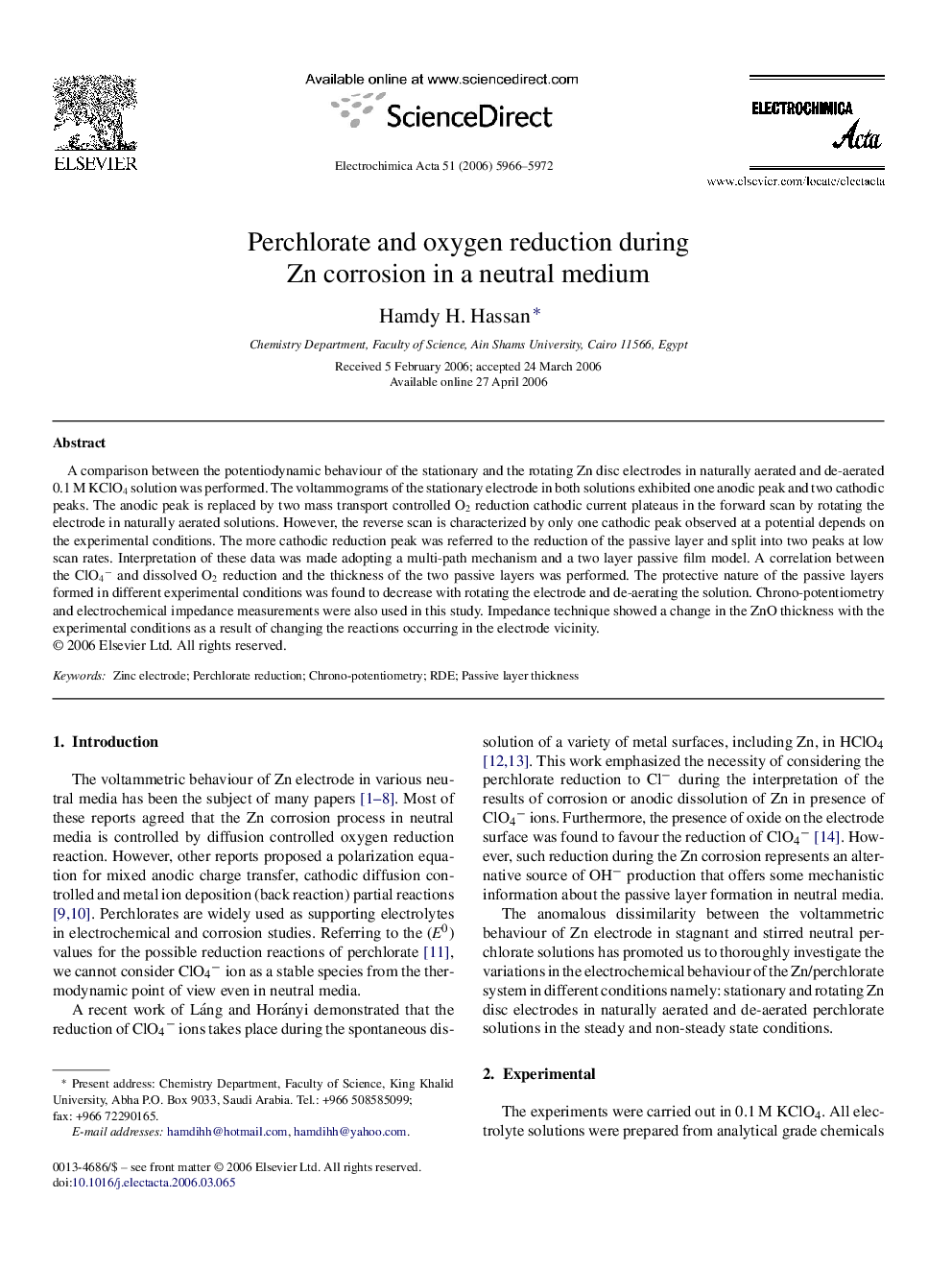| Article ID | Journal | Published Year | Pages | File Type |
|---|---|---|---|---|
| 194689 | Electrochimica Acta | 2006 | 7 Pages |
A comparison between the potentiodynamic behaviour of the stationary and the rotating Zn disc electrodes in naturally aerated and de-aerated 0.1 M KClO4 solution was performed. The voltammograms of the stationary electrode in both solutions exhibited one anodic peak and two cathodic peaks. The anodic peak is replaced by two mass transport controlled O2 reduction cathodic current plateaus in the forward scan by rotating the electrode in naturally aerated solutions. However, the reverse scan is characterized by only one cathodic peak observed at a potential depends on the experimental conditions. The more cathodic reduction peak was referred to the reduction of the passive layer and split into two peaks at low scan rates. Interpretation of these data was made adopting a multi-path mechanism and a two layer passive film model. A correlation between the ClO4− and dissolved O2 reduction and the thickness of the two passive layers was performed. The protective nature of the passive layers formed in different experimental conditions was found to decrease with rotating the electrode and de-aerating the solution. Chrono-potentiometry and electrochemical impedance measurements were also used in this study. Impedance technique showed a change in the ZnO thickness with the experimental conditions as a result of changing the reactions occurring in the electrode vicinity.
